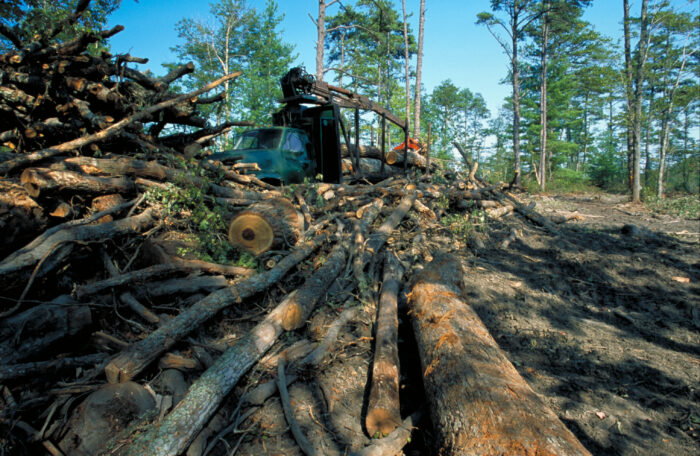USDA’s ‘bold’ climate plans fail to protect Southern Appalachian forests
Although a memo from the United States Department of Agriculture promises “bold” climate action in our national forests, the plan glosses over the threat logging poses to old-growth forests and fails to use national forests to their full climate potential.
National forests in the Southern Appalachian Mountains are incredibly valuable carbon sinks, meaning they pull dangerous, climate-warming carbon from the atmosphere. Older and mature trees are especially important, as they can store centuries’ worth of carbon. When those trees are cut, most of that carbon is released back into the atmosphere where it contributes to climate change.
This memo is out of step with what is happening on the ground in national forests — especially those in the South — and we can show the stumps to prove it.
Patrick Hunter, Managing Attorney of SELC’s Asheville Office
Utilizing these carbon sinks to their full potential is straightforward and cost-effective – Forest Service leaders just have to let healthy forests continue growing.
While USDA’s memo includes some important directives that may eventually result in policies to help forests trap and store more carbon – like mapping the nation’s old-growth stands and including carbon stewardship in the forest planning process – it also shows that the Forest Service is turning a blind eye when its own staff are cutting down old-growth forests.
For example, the memo claims that logging is no longer a “primary threat” to old-growth stands in national forests, and that “all national forests currently protect or limit management actions in old-growth stands.” Both of these claims are simply, demonstrably false.
In Southern Appalachian national forests, old-growth stands are still regularly targeted for logging. On the Nantahala National Forest alone, the Forest Service has old growth on the chopping block in two active projects, with more proposed in a third.

“This memo is out of step with what is happening on the ground in national forests – especially those in the South – and we can show the stumps to prove it,” says Patrick Hunter, managing attorney of SELC’s Asheville Office. “If USDA leaders are serious about using national forests as climate change solutions, they must protect carbon-dense old forests from unnecessary logging.”
In fact, the claims laid out in the memo are directly contradicted by the recently released Nantahala-Pisgah Forest Plan. The plan explicitly disclaims any protection for existing, old-growth forests when they are encountered at the project level. Those forests can be logged or bulldozed for roadbuilding without any limit or safeguards whatsoever. Tens of thousands of acres of known old growth in the Nantahala and Pisgah National Forests alone have no protection at all.
In order to fully utilize our old-growth forests as climate change solutions, USDA leaders must tell their staff to stop cutting them down. At the very least, they must acknowledge that logging remains a serious threat to old growth and provide oversight where forest plans leave old growth unprotected.
